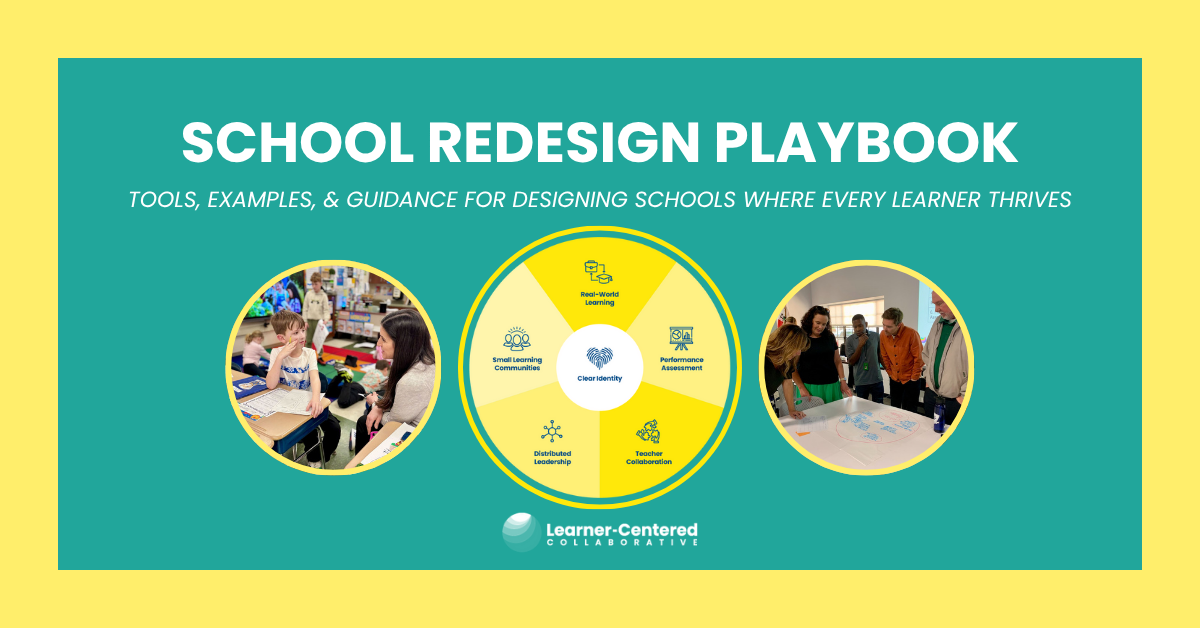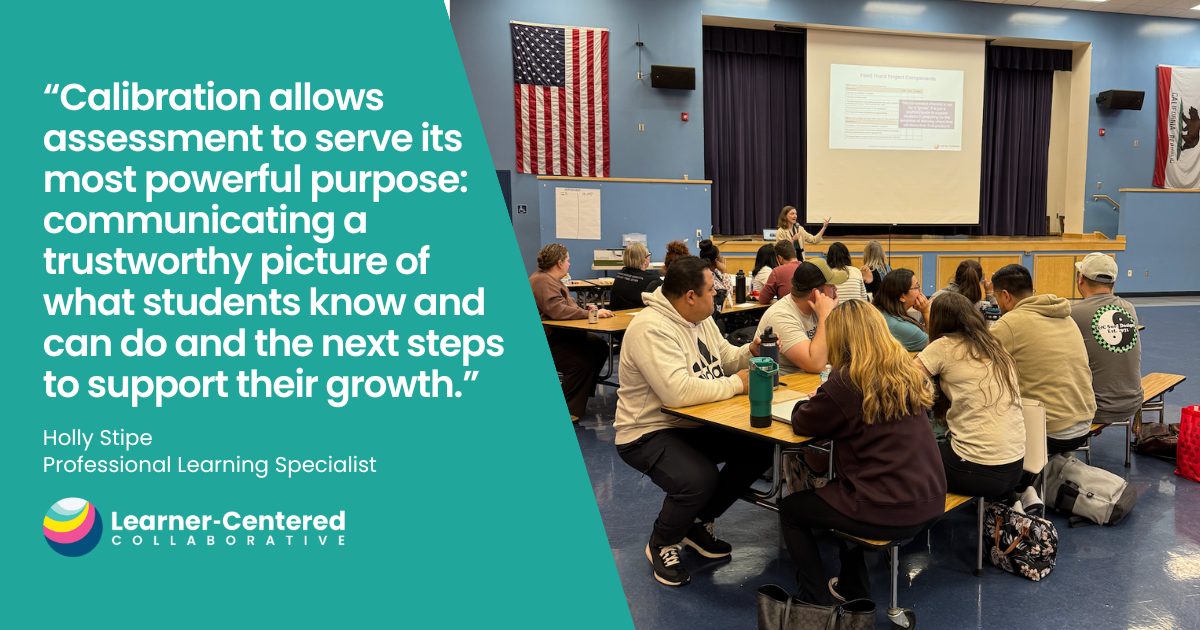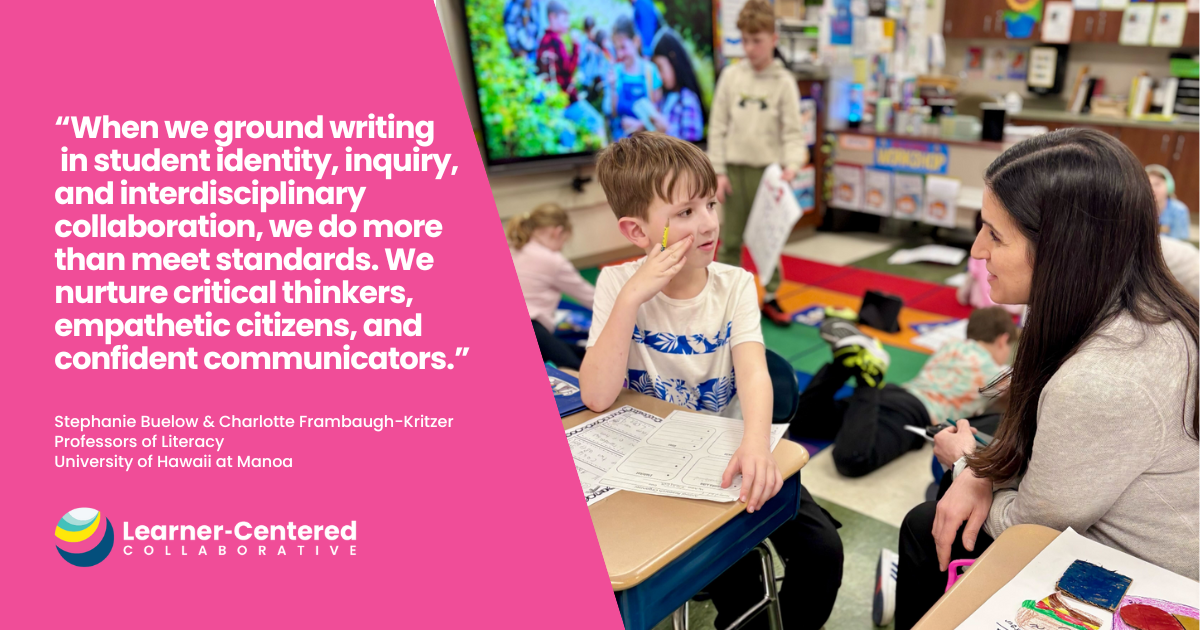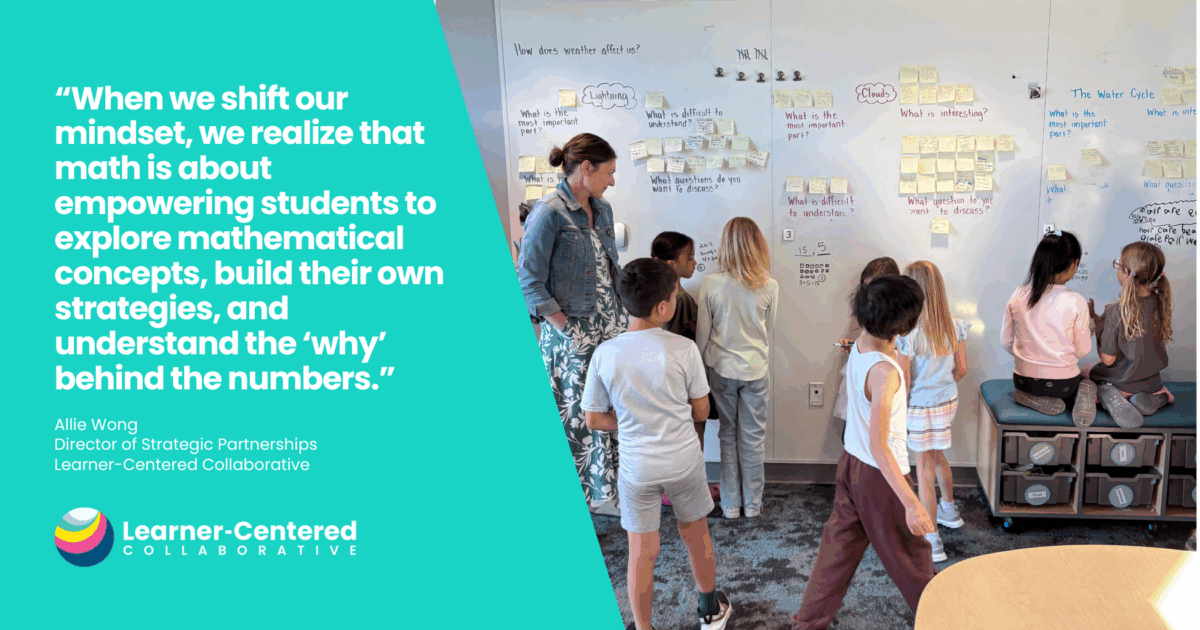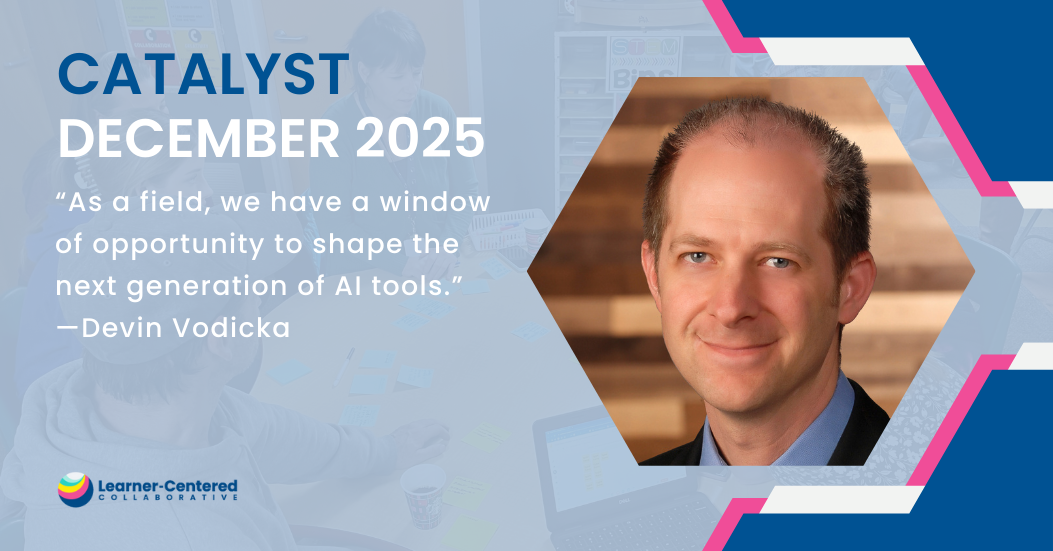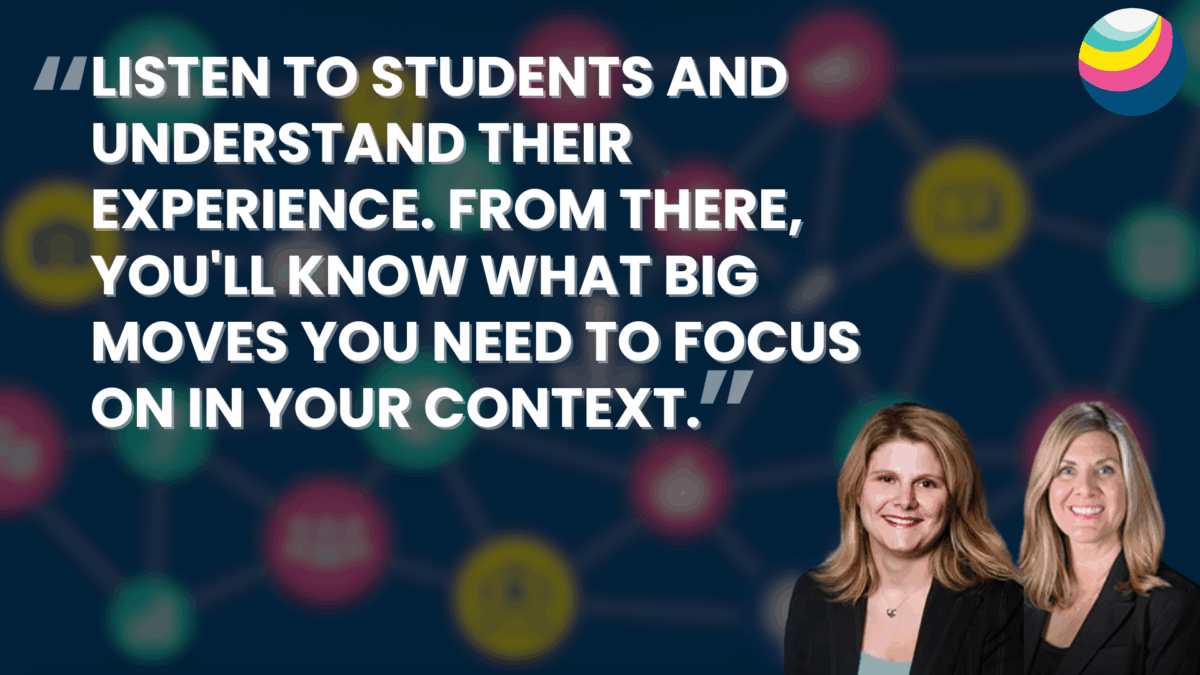4 Lessons From a Competency-Based Community of Practice
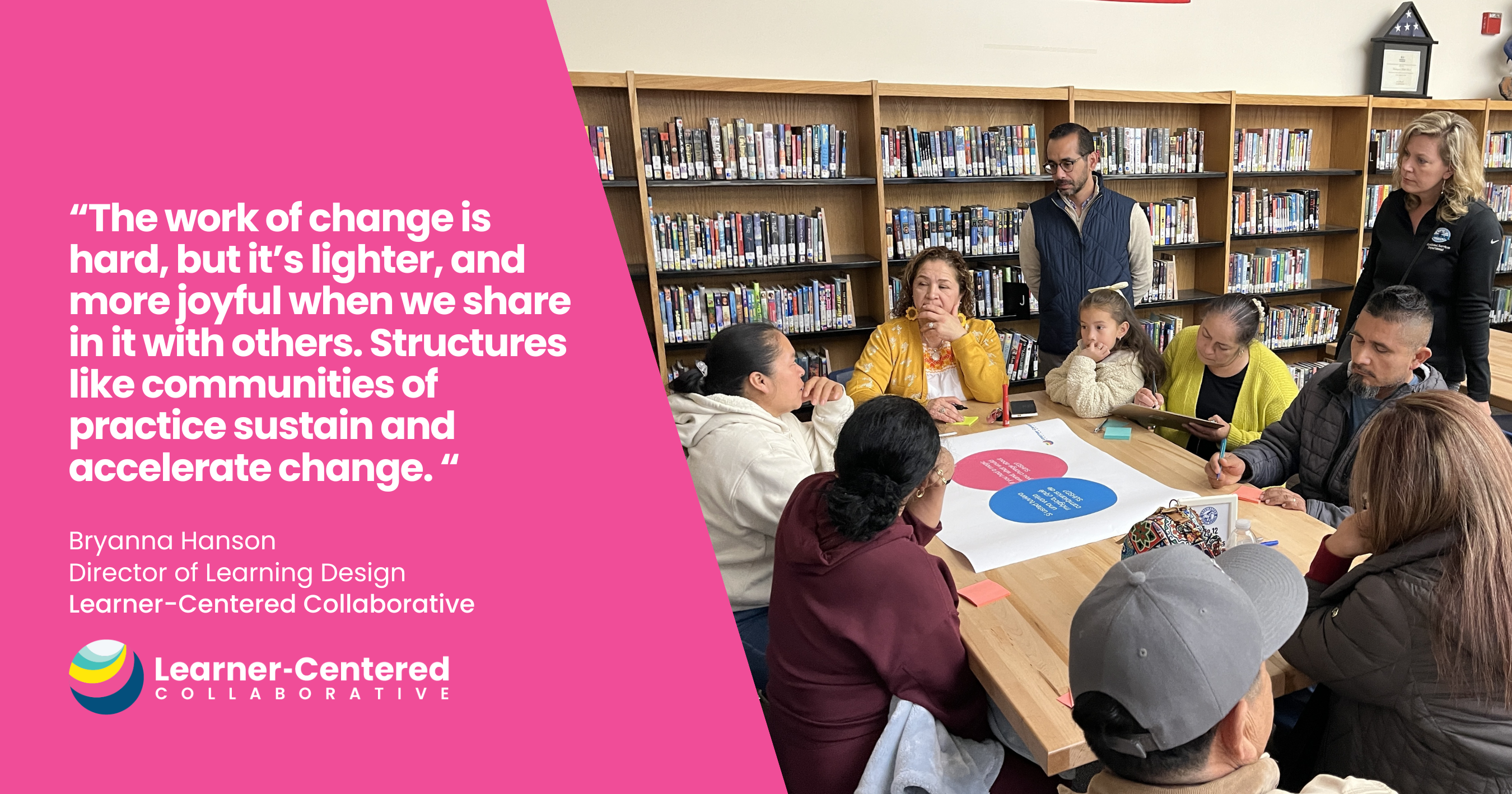
No one has completely figured it out, but everyone has something to offer.
This sentiment captures the spirit of this year’s Competency-Based Community of Practice. This virtual group is made up of 45 teachers and leaders from nine schools and districts across the country who are currently implementing competency-based assessment and reporting practices. They have convened on a monthly basis this spring to deepen and advance their individual systems and practices.
Participants met in job-alike groups—teacher to teacher, administrator to administrator— and mixed groups to swap best practices, share challenges, and use structured protocols like a consultancy to discuss problems of practice. Whether discussing technology tools, engaging families, or building educator capacity, the throughline has been clear: doing this work in community fuels progress.
This Community of Practice was grounded in Learner-Centered Collaborative’s Competency-Based Reporting Playbook. Check it out for concrete examples of school profiles and advice on designing a competency-based reporting system.
Throughout the five sessions, four key lessons emerged around meaningful shifts toward a competency-based system.
1. Coherence and Documentation are Essential
Every team emphasized how critical it is to have clarity in language, expectations, and systems, whether mapping out competencies, designing progress, tracking tools, or taking on other change-making challenges.
Without shared language and clear documentation, teams found it difficult to maintain momentum, onboard new teachers, or explain the shift to families. On the flip side, when teams had centralized, living documentation such as Portraits of a Learner, clear competency maps, aligned rubrics, assessment philosophy documents, or handbooks, it created a strong backbone for implementation.

One school shared in a consultancy that onboarding new teachers was challenging. After debriefing with other leaders, they decided to create a handbook written by both faculty and students with tutorial videos that could support new teachers’ understanding of the school’s assessment philosophy and how assessment operates.
Lesson: Clear, coherent systems don’t stifle innovation—they empower it. When documentation is clear and consistently referenced and updated, it reduces ambiguity and frees up energy for more meaningful understanding and iteration.
2. Tech Tools Help, But There is Work To Be Done
While platforms can support progress tracking, personalization, and communication, most traditional tools require significant hacks or workarounds to truly fit a learner-centered, competency-based model.
Many of the schools in the Community of Practice use tools specifically created for competency-based assessment, but they are still finding challenges with multiple tools that don’t talk to each other or having to come up with workarounds to ensure the tool is being used in alignment with their model.
Challenges discussed included:
- Limited interoperability across platforms
- A high learning curve for teachers who are already busy
- Tools not being user-friendly for all
- Inability to track progress on competencies over time or across courses in many tools
One school district shared in a consultancy that across K-12, they use four different assessment and reporting systems which makes it challenging to document progress across years and create consistency across the district.
Despite these challenges, teams shared creative, sometimes low-tech solutions such as google slide templates for portfolios and spreadsheets tracking progress across courses. One member even commented that knowing everyone else was having trouble with their tools was enough reassurance to keep working through the challenges.
A shared sentiment was that tools built for competency-based assessment have generally been more responsive to feedback, updating their features and actively problem-solving with teachers to reach a solution that works for their model, rather than the larger and more traditional SIS/LMS systems.
Lesson: Technology is a powerful lever for implementing competency-based assessment and reporting. The best tools require time to ensure the tool is working for the system that you’ve built, rather than adjusting your system to use a tool.

3. Voice, Choice, and Time for Educators Make the Shift Possible
One of the key takeaways from discussions in the Community of Practice surrounded building teacher capacity. If we expect teachers to move from a traditional model of assessment and grading to a competency-based one, we have to build time and agency into the process.
That means protecting time for planning deeply aligned assessments, reflecting, collaborating, and calibrating on student work and assessment. It also means taking the time to implement new systems in stages, not all at once. Voice and choice also matter—educators need a say in how the work rolls out, what tools they use, and how they develop professionally.
Another theme that came up was that it’s important not just to onboard new teachers, but also help veteran teachers feel supported and connected to the work. This could look like pairing teachers up for collegial coaching cycles and providing personalized professional learning that matches each teacher’s starting point and goals. Many of the schools shared that they have teachers share their best practices through teacher-led professional learning.
Lesson: A shift this deep won’t succeed without investing in the people at the center. Give teachers time, trust, resources, and choices, and bring them along for the journey.
4. Doing the Work in Community Changes Everything
Again and again, participants shared that the chance to be in community with others doing the work was powerful. One teacher shared, “having competency-based friends helps!”
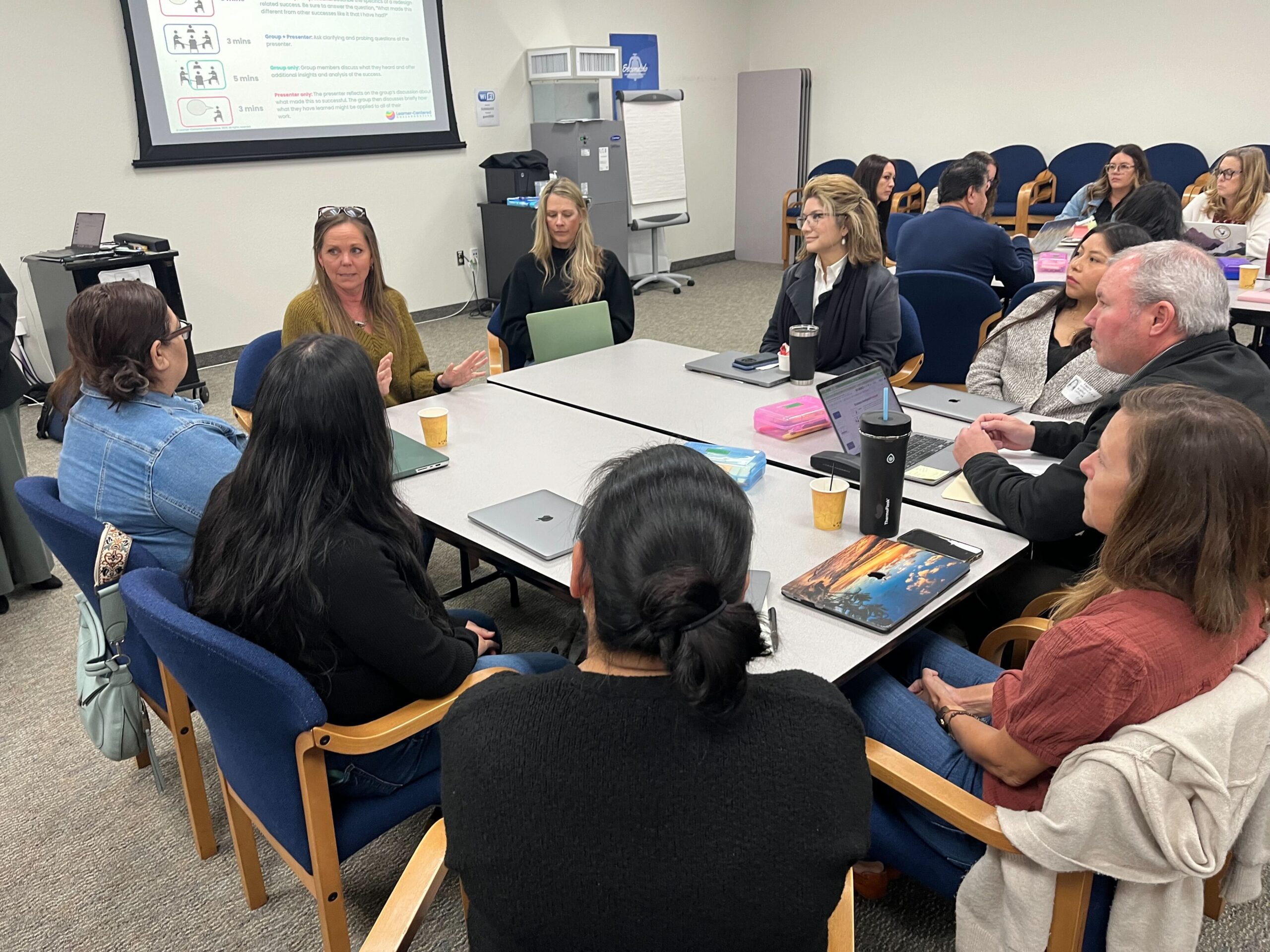
In isolation, even the best ideas can lose steam. But in community, teams gain perspective, energy, and validation. Many left feeling that they had made a lot of progress, while also being inspired by what others are doing. Through the consultancy protocols, resource sharing, simple storytelling, and conversation, each month’s meeting affirmed that no one is doing this alone, and everyone has an idea to offer.
There was a spirit of generosity and learning in the room as schools shared templates and artifacts, as leaders were vulnerable and opened up about challenges, and everyone embraced the mess of change.
Lesson: The work of change is hard, but it’s lighter, and more joyful when we share in it with others. Structures like communities of practice sustain and accelerate change. Building in more opportunities for your teachers and leaders to discuss best practices, challenges and ideas across grade levels, disciplines, and sites can be a great first step to building community.
Where We Go from Here
There is still work to be done, but, it’s reassuring to see the momentum behind these nine participating schools and districts. As they design learning experiences and rethink assessment practices to center learners and share their learning, their strengths and their areas of growth emerge more clearly and more holistically.
And if you’re just beginning, or feeling stuck, remember: you don’t have to do it alone.
To start your learner-centered journey (and eventually join your own community of practice with other leaders), reach out to us at collaborate@learnercentered.org. We can’t wait to collaborate with you!
